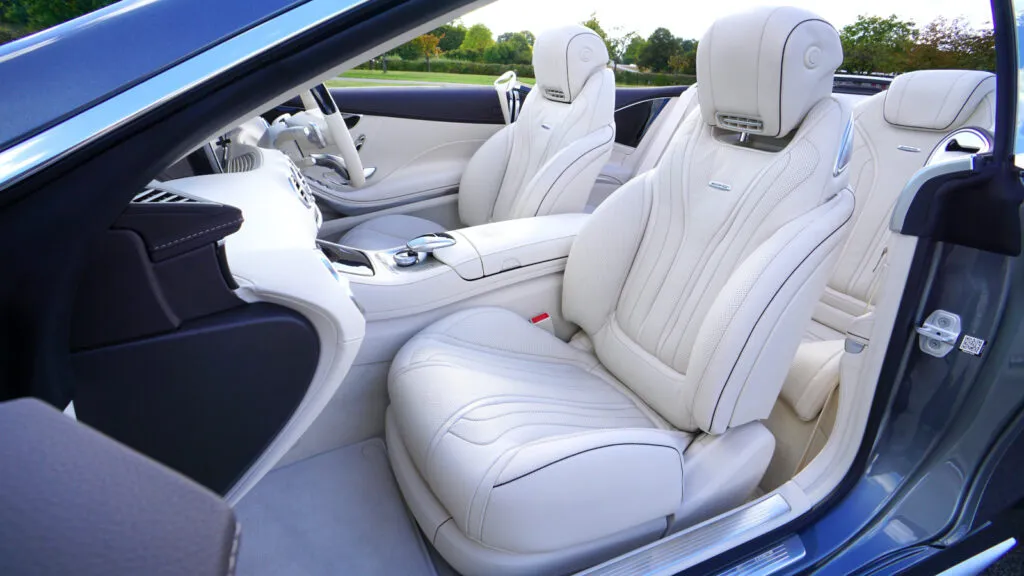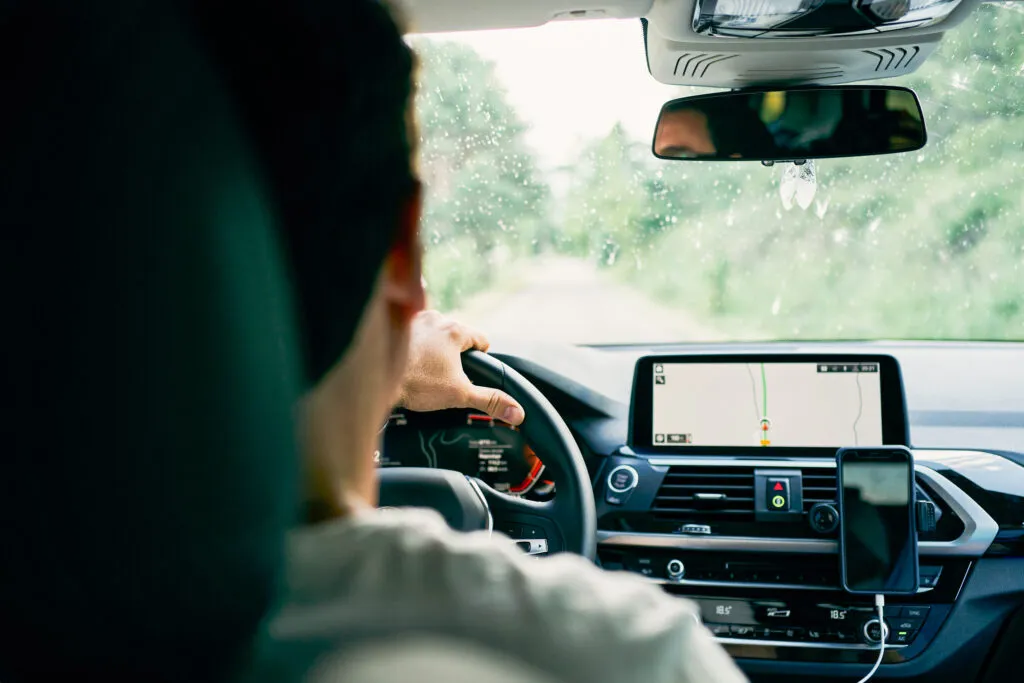
Get home early with RoadWarrior.
Enter your stops, optimize your routes, manage your team – quickly and efficiently.
Try RoadWarrior free for 7 days
Try free for 7 daysDictionaries generally define ergonomics as a scientific discipline that uses principles of biotechnology and engineering to make products more comfortable for workers and consumers. But ergonomics isn’t just about design. It also factors in how we use things.
In the context of a car, that means considering anything from the placement of a radio dial to how a person sits in a passenger seat. One ergonomics engineer for Ford described her job as “human factors engineering” [source: Autoweb]. So while engineers may design cars to be ergonomically friendly, it doesn’t mean that one design will work for all users, especially if the car is designed for a person of certain proportions.
It’s also up to us passengers and drivers to make ourselves comfortable. For instance, if you’re a driver and position your seat so that your feet barely reach the pedals, you may induce unnecessary strain on your arms — just as sitting too close can cause leg or back pain. Seat position, posture and time spent in the car all can affect a person’s health. According to one study, if you drive four or more hours a day, you’re six times more likely to develop back problems [source: Driver Ergonomics]. Musculoskeletal disorders also pose a concern for long-distance drivers, particularly those who drive for a living: truck drivers, taxi drivers, even police officers on patrol.
In this article, we’ll take a look at the design of car ergonomics and how to take full advantage of them for health, comfort, efficiency and safety. First, let’s see what role car ergonomics play for a person in the driver’s seat.
Driver Seat Ergonomics
Ironically, the best way to take advantage of the driver seat’s ergonomics is not to spend too much time in the seat. If you’re driving long distances, you should alter your position or get out of the car to walk around and stretch at least once every two hours [source: Loughborough University].
But whether you’re in the car for long or short periods, there are things you can do to minimize complications. Researchers from Loughborough University came up with several guidelines for ensuring drivers’ health. These researchers created an ideal “starting position,” from which the driver adjusts various controls to ensure maximum comfort, control and a good view of the road and the car’s interior systems. The seat should be pushed far back, but the steering wheel, if adjustable, should be brought high and close to the driver. The seat’s backrest should be reclined back 30 degrees, while the seat height and cushion should be in their lowest positions.
After this starting position is established, the seat should be raised to improve the driver’s road vision. The seat should also be moved forward and up to allow the driver good control over the pedals, while not causing leg or knee pain. Adjust the backrest and lumbar support to provide adequate support; excessively declining the backrest can cause back pain and impinge on the driver’s field of vision. And don’t forget the headrest. It can provide crucial neck support.
The final step is adjusting the mirrors to maximize your view of the road and to minimize blind spots, but before doing that, move the steering wheel so that it allows a clean view of the controls and doesn’t touch your legs while driving.
On the next page, we’ll look at passenger ergonomics, and we’ll also learn about some tools that engineers use in order to make cars more ergonomically friendly for passengers and drivers alike.
Common Driving Injuries
According to one study, foot cramps are the most common repetitive driving injury, followed by back pain, neck stiffness, side ache and eye strains, which often lead to headaches [source: Motion Trends].
Passenger Ergonomics
Virtual reality (VR) is one of the many cutting-edge tools engineers use in crafting car ergonomics. VR spares designers the need to craft a full-scale model. Instead, a male designer can go along for a virtual ride as, say, a teenage girl, seeing how seatbelt placement or the sculpting of a seat affects her.
With human beings generally living longer, as well as growing taller and heavier, it’s important for cars to be able to adapt to serving more diverse populations. Similarly, the presence of more elderly drivers and passengers means that cars have to accommodate their needs; in particular, they have to be easy for these folks to get in and out of. Using virtual modeling allows engineers to simulate the behaviors of the elderly or those with special needs, ensuring that car interiors are designed and tested for an increasingly diverse population.
Despite the utility of VR and computer modeling, physical prototypes are important for testing designs in the real world. Ford, for example, creates prototypes called bucks after trying out designs in virtual simulations [source: Autoweb]. These bucks are then tested by engineers, other Ford employees and outside people brought in to offer an objective perspective.
While these modeling methods provide plenty of data and flexibility, it’s up to engineers to figure out how to best use them. For example, an engineer may have to choose whether to make a passenger seat more comfortable by adjusting its size, shape or position in relation to the rest of the car (which may allow a passenger more room to stretch his or her legs).
Besides ensuring comfort and ease of use, ergonomic design, or the lack thereof, has a role to play in safety in the event of an accident. Many headrests aren’t designed in an ergonomic manner at all. They don’t actually work with the rider and support his or her head and neck, so they don’t provide adequate support in the event of a crash. A study by the U.S. Insurance Institute for Highway Safety showed that most car headrests didn’t protect well against whiplash. The institute tested 70 seat and head restraints for whiplash protection and just eight received “good” ratings, while 30 restraints were rated “poor” [source: Croasum]. Some restraints couldn’t be tested at all because they were incompatible with tall passengers.
Placement of Vehicle Controls
Vehicle controls constitute an essential part of ergonomics. From cars with push-button ignitions — like many Toyota models, notably the Prius — to power seats, automatic headlights, automatic climate control and electronic parking brakes, the latest in ergonomic innovation is often characterized by automation and ease of use. These features are, notably, easier for disabled drivers to use and allow many drivers to simply set a goal, such as a desired temperature of 72 degrees Fahrenheit (22 degrees Celsius), and the car does the rest.
One of the more intriguing trends in ergonomic design is the attention now paid to older drivers. All types of cars — including sports cars — are now being designed to have controls with larger text and better lighting to maximize readability, particularly for older or functionally disabled drivers. Even door handles are being made to allow a better grip for people with conditions like arthritis.
To design controls suitable for older or even for pregnant drivers, some auto engineers put on suits that limit their mobility and range of vision or that come with a large belly, mimicking pregnancy. Elaborate bodysuits won’t always do, so engineers do often turn to virtual reality and computer modeling. This flexibility means that an engineer can easily test how a certain control configuration might be used by a 6-foot, 200-pound man or a 5-foot, 120-pound. woman — and everyone in between. These programs also allow for testing for people with disabilities, unusual body types or special needs.
With new features, however, come new challenges. Distracted driving is a major concern, leading many U.S. states to pass laws regulating drivers’ cell phone use. At the same time, more cars are coming equipped with integrated hands-free phone systems, often incorporating Bluetooth. But the challenge then arises of how to make this system accessible and easy to use without distracting drivers or requiring them to take their eyes off the road. There’s some speculation that future cars will need to rely more on audio/voice controls, a feature that exists to a limited extent in some vehicles [source: Autoweb].
The Virtual Test Drive
Virtual reality also allows engineers to take virtual test drives, seeing how, for example, placement of radio dials affects a driver’s concentration while on the road.
Vehicle Cargo Holds
To badly paraphrase Freud, sometimes a cargo hold is not just a cargo hold. That is, car trunks are now employed for numerous purposes besides hauling gear or spare tires or holding suitcases on the way to the airport. Many trunks now include built-in pockets, flaps that hide storage areas for a spare tire and its associated equipment, a rubberized bottom and covers to conceal and protect cargo. Many trunks are also expandable (by way of rear seats that fold down), are removable or disappear completely into the vehicle’s floor.
User flexibility and add-ons are the latest in cargo hold innovation, with expandable cargo areas allowing a car to serve as anything from a plush dog carrier to a space for your bicycle. For example, a Volkswagen GTI has rear seats that flip down, increasing the cargo hold area from 12.3 to 46 cubic feet (0.3 to 1.3 cubic meters). The Mercedes-Benz GLK350 comes with two types of electrical outlets in its cargo hold — a 115-volt outlet and a 12-volt power plug — although it’s bested by other vehicles, like the GMC Acadia, which has five total outlets. The Honda Element, often marketed to outdoors enthusiasts, has a washable floor, causing one site to name it amongst its top 10 cars for tailgating [source: Cars.com].
Many car companies trumpet their vehicles’ cargo hold areas, measured in cubic feet, or tout the ability to fold down seats. But all of that space may be useless if it simply becomes an extension of someone’s messy closet. That’s why some manufacturers are now integrating trunk organizers, an accessory that has traditionally been sold by third parties.
And when you’re done tailgating, camping or loading in the dogs, you may not have to worry if your hands are full. New cars increasingly feature so-called “soft closing,” or automatically closing, trunks. Just gently push on the door to the cargo area and the car will do the rest, using a motor to close the lid firmly in place.
For more information about car ergonomics and how to get the most comfort out of your car, take a look at the links on the next page.
More Than Just Comfort
Ergonomics extends to car features like adding artificial engine noise to usually quiet hybrid cars.
Content written by Jacob Silverman and created in partnership with HowStuffWorks.com


